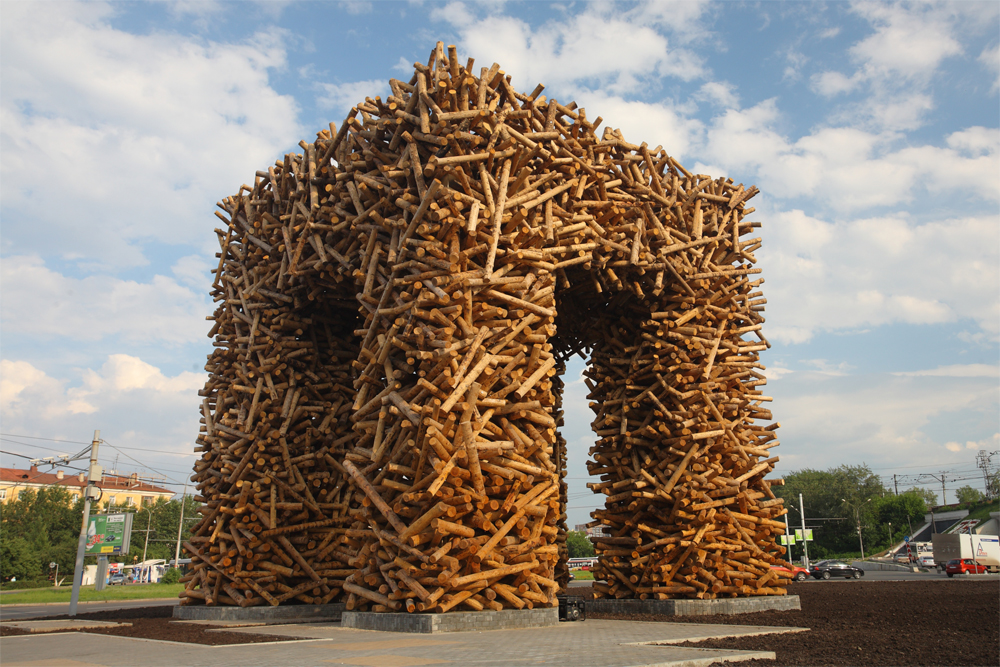Perm

Perm is a large industrial, scientific and logistical center in the foothills of the Urals. Initially a workers’ settlement of a copper smelting plant located on the banks of the Kama River, Perm changed into an administrative center of the Perm Krai. In spite of its rather young age (the city is younger than 300 years old) before 2004 Perm was among the Russian million-plus cities and today is the most probable candidate to enter the list again.
Perm is a major industrial center which proved crucial during the First World War when Motovilikhinskiye plants supplied one fifth of Russian army’s artillery armaments, and during the Second World War Perm oblast became one of the main regions receiving evacuating people and plants. 124 industrial enterprises were moved into the oblast, and 64 were located in Perm. After May of 1945 and until the end of the Cold War Perm remained a forbidden town focusing on armaments industry and heavy engineering.
Today, Perm is a city where the new cultural policy is considered a foundation for modernization extending to the entire region. The “cultural revolution” announced at the end of
In Perm, the cultural heritage has always been preserved and valued: the Art Gallery of Perm displays the internationally-acclaimed collection of perm wooden sculpture, one of the largest Russian collections of masterpieces of Russian icon-painting and art: the gallery has original works of E. Repin, E. Levitan, А. Savrasov and V. Serov.
The land of Perm is rich with talents: many key personalities of Russian history lived and worked here. At the turn of the 20th century famous resident of Perm Petr Struve took active part in reforming the political system of the country, developed the concept of personal suitability: personal responsibility and personal contribution of every citizen to the present and future of the entire society. Today, many economic strategies of leading countries are based on the concept of developing and supporting human capital assets.
Perm is open to innovative ideas and technologies. A regional perinatal center has been commissioned with enough capacity to receive several thousand female patients annually, including those with feto-maternal deviations. The largest in the region Federal center for cardiovascular surgery will receive its first patients this spring.
The authorities of Perm Krai create favorable environment for the development of science in the region. In Perm, there is a number of institutes of the Urals division of the Russian Academy of Sciences, dozens of research and development and design institutes, seven institutions of higher education that conduct scientific research in applied and fundamental fields. Two institutes of Perm obtained the status of “national research institutes”.
In view of the above, it is only natural that the Perm forum operates as a natural platform for innovations. In the field of human capital assets Perm becomes a trendsetter transmitting the most successful experience of global and Russian experts and creating the most advanced development programs by inviting representatives of the authorities, business circles and leaders of civil society to take part in the dialogue.
- return_links(); ?>
-
Forum communication
-
Forum car
-
Sponsor
-
Sponsor
-
Sponsor
-
Sponsor
-
Sponsor
-
Sponsor
-
IT support
-
Sponsor
-
Sponsor
-
Sponsor
-
Sponsor
-
Sponsor
-
Sponsor
-
 Sponsor
Sponsor -
 Sponsor
Sponsor -
Sponsor
-
Sponsor
-
 Sponsor
Sponsor -
Partner
-
General media partner
-
General media partner
-
Forum TV
-
General internet partner
-
Forum online newspaper
-
Official media partner
-
Regional partner of the project
-
Official media partner
-
Official media partner
-
Official media partner
-
Official media partner
-
Official media partner
-
Multimedia partner
-
Official media partner
-
Official media partner
-
Official media partner
-
Official media partner
-
Official media partner
-
Official media partner
-
Official media partner
-
Official media partner
-
Official media partner












































